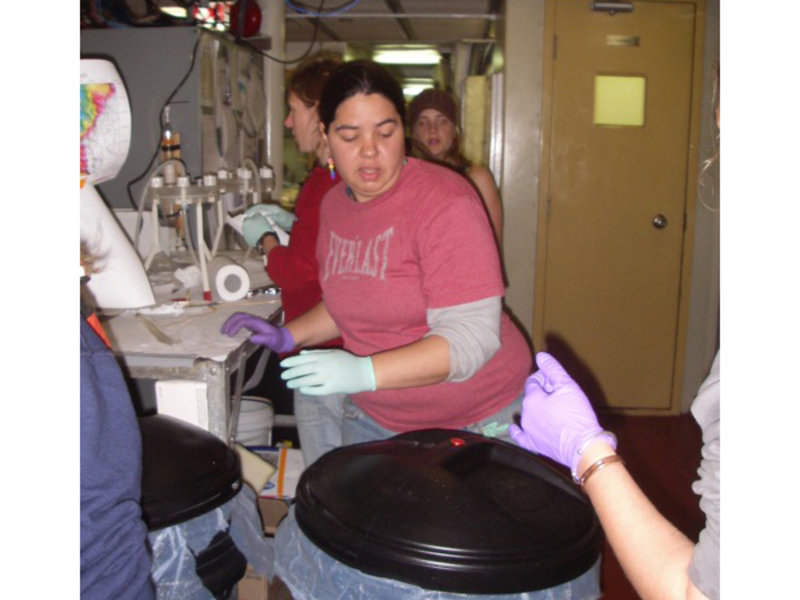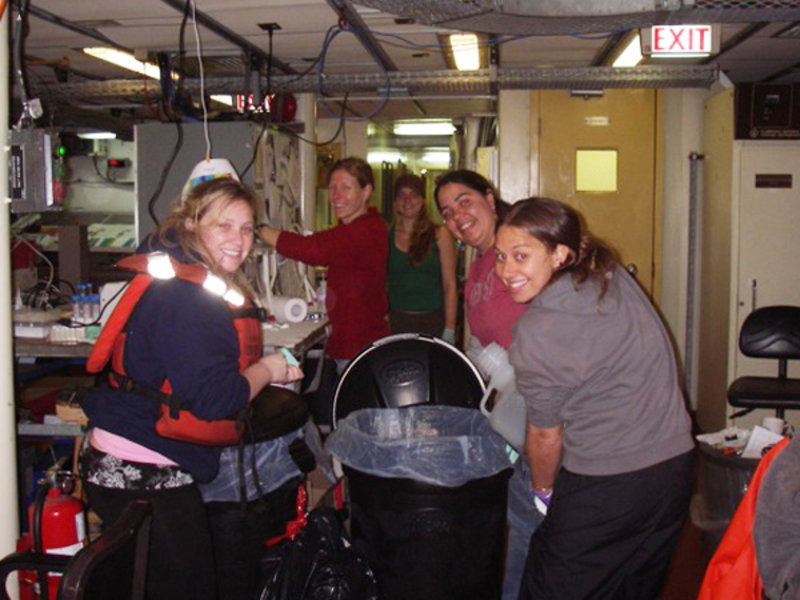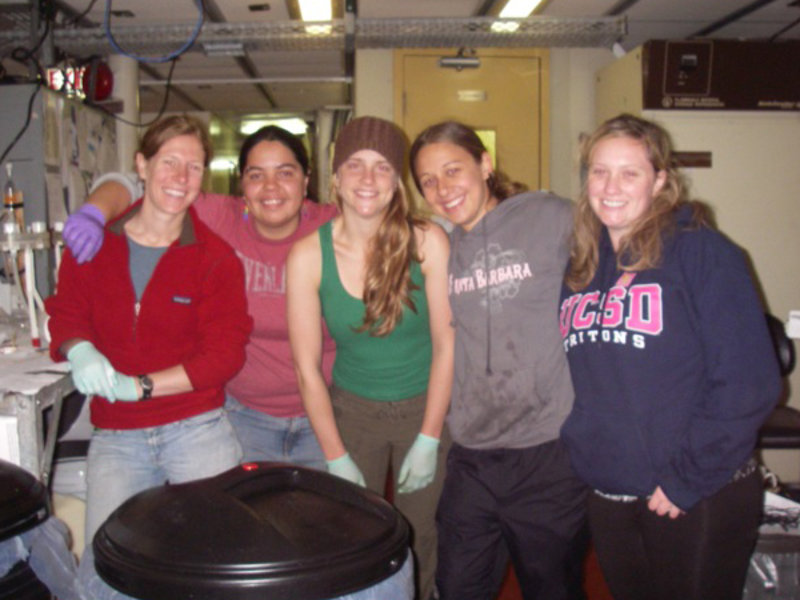
By Monica Heintz, University of California Santa Barbara
March 14, 2010
We have come to the end of the cruise and to our final sampling destination, the Peru-Chile Trench. Trenches are the deepest areas in the ocean, and are a prominent feature of places where two plates collide and the denser plate (in this case oceanic crust) is forced beneath the less dense plate (in this case continental crust). This process is called subduction. One of the scientists in our group, Rosa Leon, is interested in the microorganisms that are adapted to live in the cold, dark, deep waters and sediments of the Peru-Chile trench. Rosa has been helping everyone else out for this entire cruise, waiting for the last few days when we would visit her sampling area. She has to work quickly to keep her samples cold and dark (and for some sample types, under high pressure) to mimic the conditions the microbes see in their natural environment. I wanted to lend her a hand in collecting these unique samples. Knowing that we would arrive on station and start working in the middle of the night, I swapped my sleep schedule a day in advance; sleeping all day on Sunday, getting up to work all night, and sleeping away most of Monday.

Rosa working hard to organize water filtration. Her special filtration set-up is on the lab bench. Image courtesy of INSPIRE: Chile Margin 2010. Download image (jpg, 77 KB).
Rosa used the Niskin bottles on the CTD to collect a few hundred liters of water from deep in the trench. Then, in the early hours of the morning, Ashlee and I worked around the rosette, transferring the water into large plastic containers. We had to keep the containers cold and dark, so we put them in large black garbage bags with ice, and worked with the deck lights turned off. We also had to be very careful to keep these unique samples sterile. We transferred water from the plastic jugs into large garbage cans with special sterile liners. Rosa then used a special filtration set-up to run hundreds of liters of water from these garbage cans through large filters, from which she will extract DNA and lipids.

Transferring water to garbage cans for filtration. From left to right: Ashlee, Ally, Christina, Rosa, Monica. Image courtesy of INSPIRE: Chile Margin 2010. Download image (jpg, 104 KB).

The trench team. From left to right: Ally, Rosa, Christina, Monica, Ashlee. Image courtesy of INSPIRE: Chile Margin 2010. Download image (jpg, 89 KB).
After working through the night, and a reward of breakfast, I was exhausted and ready to go to bed. Unfortunately, today was a day for nail-gunning by the ship’s crew. Since the ship is constantly exposed to salt water air, it tends to rust. This is a problem that the crew must keep under control by chipping away loose paint and rust, and repainting. To chip the paint away, they use a specialized instrument that rapidly hits sharp pieces of metal against the side of the ship. As you might imagine this makes quite a racket, and can make it challenging to sleep. But at this stage in the cruise, and after working all night, I am exhausted and was able to sleep through about 5 hours of nail gunning right outside my cabin. Well, here it is, Monday night. With only a day of ship time remaining, it is time to pack up my gear and samples and get ready to leave the ship. I am wide awake to work through the night.